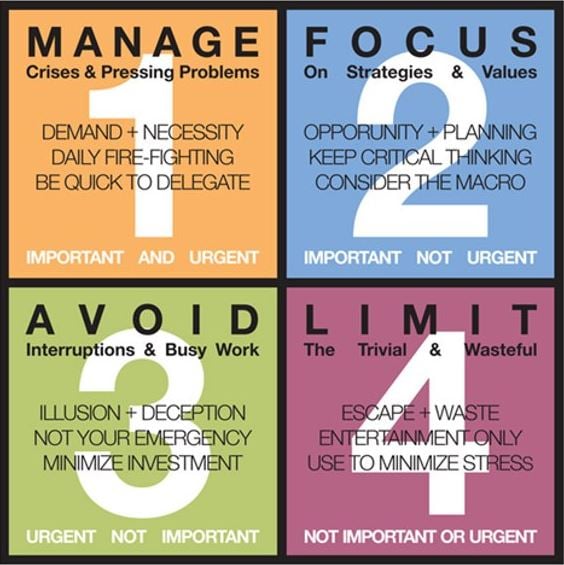Living a full professional and personal life means balancing competing demands. Sometimes I feel as if I'm in a game of catch, but one where everyone else has numerous balls and they are all throwing at least one ball at me for me to catch. In fact, I may have had a nightmare about that recently. And I was not having as much fun as in the picture above!
Luckily, one of the strategies taught in the Woodard Institute is the use of a tool that Joe Woodard has taught and deployed across the Woodard company as a whole. This tool allows me to create structure around my day so that I am able to handle the many demands of my job - which also allows me to harmonize my work and home lives. What is this tool?
Before I give you the name of it, I want to caution you. Read the full article, even if you have heard of this before. What will be presented here has a distinct Woodard twist to the tool as it is normally presented.
What is the tool? The Eisenhower Matrix. The name of the tool comes from Dwight D. Eisenhower and his famous quote, "Most things which are urgent are not important, and most things which are important are not urgent.”
The Eisenhower Matrix breaks tasks into four quadrants. The website for Eisenhower.me define tasks as: (1) Do First - important tasks that should be done the same day, (2) Schedule - important tasks, but not so urgent and should be scheduled, (3) Delegate - urgent tasks, but less important and can be delegated to others, (4) Don't do it - tasks that aren't important or urgent and shouldn't be done at all.
At Woodard, we use the Eisenhower Matrix just a bit differently.
- Quadrant 1: Manage - Tasks that must be managed, such as crises and pressing problems.
- Quadrant 2: Focus - Tasks that allow you to focus on your strategies and values.
- Quadrant 3: Avoid - Tasks where you should minimize your investment in things like interruptions and busy work
- Quadrant 4: Limit - Tasks that should be limited (but not eliminated), because they may be trivial and wasteful.

In my work day, I usually find myself in quadrants 1, 3 and 4. Why? Necessity clamors for attention in quadrant 1, quadrant 3 is usually full of very LOUD demands, and human nature pulls me into the fun, easy and predictable world of quadrant 4.
Quadrant 2, although it is easy to ignore, is a critical quadrant. Why? Because quadrant 2 is essential for both business stability and growth. Quadrant 2 is that quiet place of deep reflection, critical thinking and analysis, and looking at the big picture. It is that place where you pull out the old SWOT analysis chart. It is the place where you define objectives and create game plans to reach them.
I confess that I am not at all an A+ team member at managing the quadrants. I am learning, though, that I achieve success in my day when I plan around the four quadrants. And my greatest success comes when I reserve specific blocks of effort to work in quadrant 2 and then do it.
So, how do you manage your tasks using this method?
1. At the end of each day, categorize the next day's tasks based on each of the quadrants
2. Build each quadrant into each day, not allowing yourself to be consumed by any one quadrant
3. Tackle the most challenging or dread tasks at the time when you are most alert and least distracted
.png?width=150&height=63&name=TWRlogo-regmark_blueblack%20(1).png)
.png)









Do you have questions about this article? Email us and let us know > info@woodard.com
Comments: